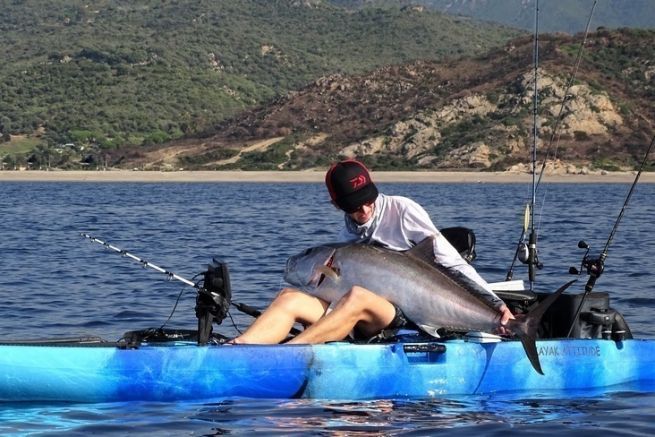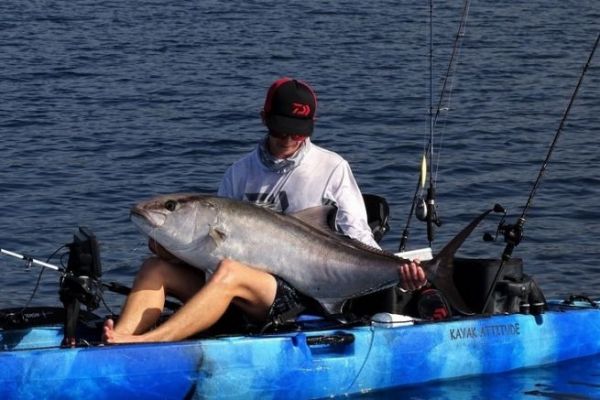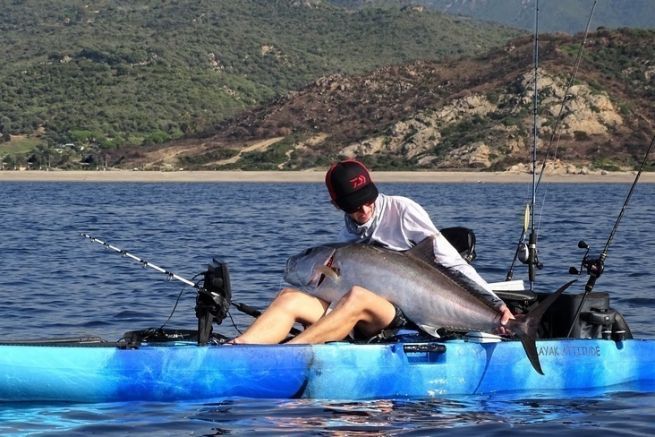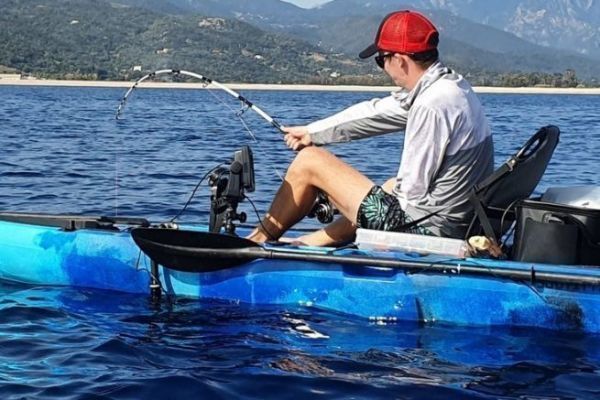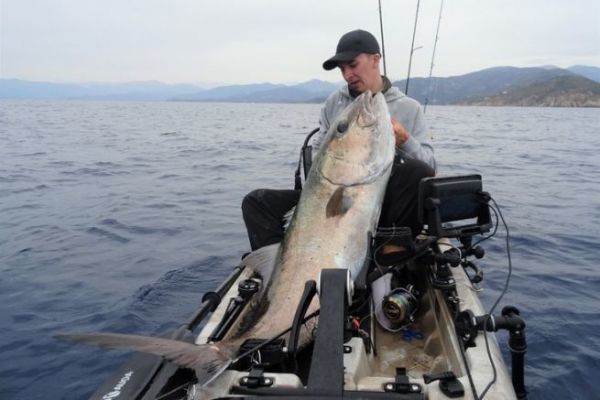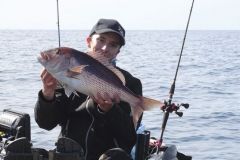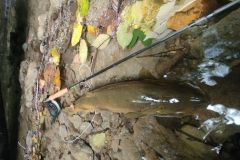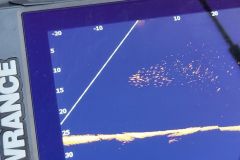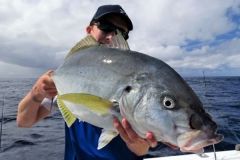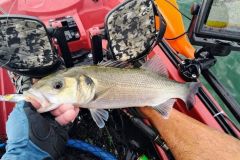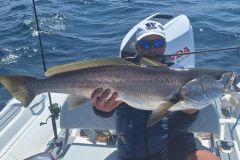Safety first
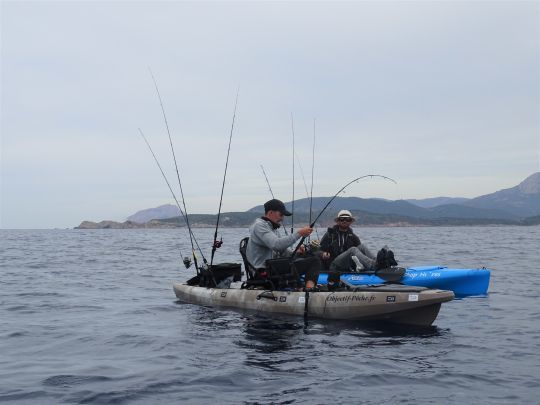
Of course, safety is the priority when you want to tackle such fish in a kayak. Amberjack and tuna are not rare on our coasts and it is common to come across amberjack weighing more than 20 kg, and sometimes even tuna up to 80 kg. It is mandatory for your safety to choose a day when the weather forecast announces a very calm sea, I recommend you to use several weather websites to cross-check the information.
Going alone is not an option, a minimum of two kayaks will ensure safety in a difficult fight or to help you in case of problems. You can also equip yourself with a portable VHF radio, not mandatory but very useful in case of problems on the water.
Adapted equipment
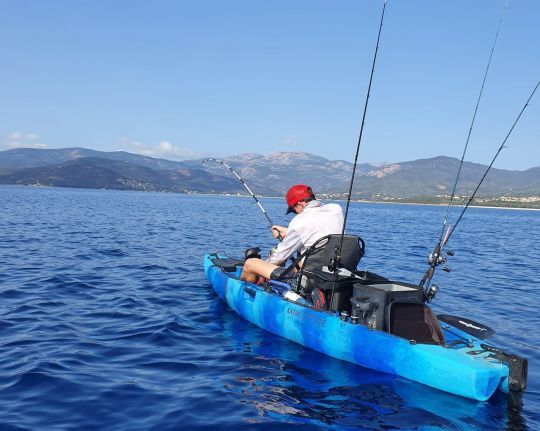
The new generations of kayaks, especially those with pedals, have brought better speed of movement, better stability and therefore better safety. It is not advisable to try this kind of fishing with simple paddle kayaks, which are often not very stable and with which you cannot easily manage a fight.
Thanks to the rudder, the steering tool of a pedal kayak, it is very easy to position the kayak correctly in a one-handed fight. When one hand is holding the rod, if the fish decides to change direction suddenly, all we have to do is follow it by turning the rudder to always keep the fish towards the front of the kayak. If a big fish decides to dive quickly into a fight with a lot of drag, but the rod is on one side and not the front, you could capsize in a split second.
Be prepared for any eventuality
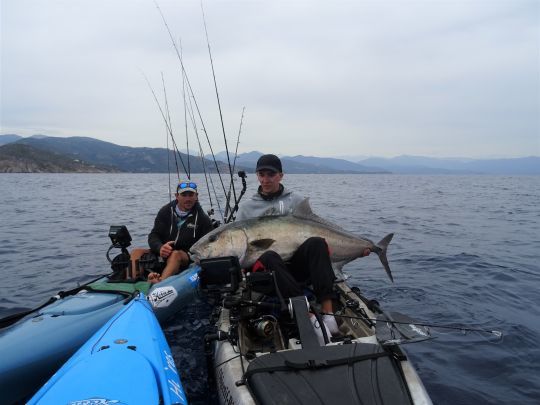
When tackling such fish on such a small boat, you have to know how to anticipate things that can happen. For example, a fish that is too big and that could completely empty your reel despite your best efforts, on which it would be impossible to break a leader in 80 or 100 lbs from a kayak. A pair of scissors, pliers and a sharp knife should be on hand at all times.
If unfortunately, you turn over, do not forget that all your rods must be attached to the kayak with leashes or small cords to avoid that they are found in 80 meters of water. Your lure boxes and the rest of your equipment should preferably be in a watertight bakkan, properly closed to prevent water from getting in and sinking it.
If you are brave enough to try this technique, practice beforehand on the beach to get back into your kayak turned over in the water. If you are not able to perform this action, then your safety is compromised in case of a problem at sea.

 /
/ 